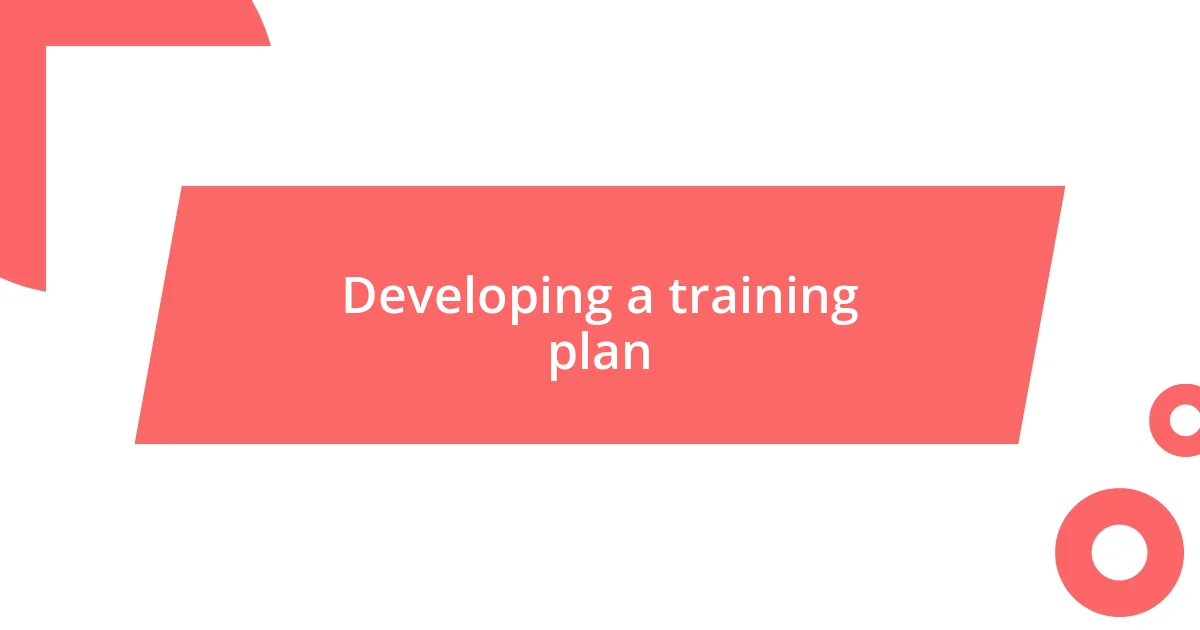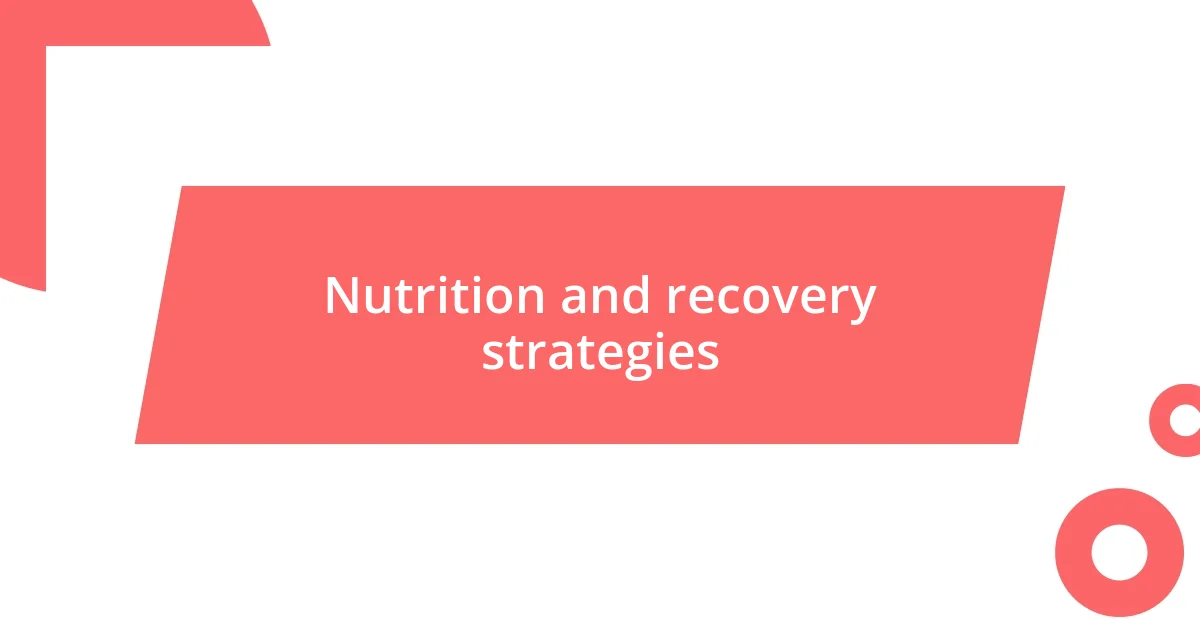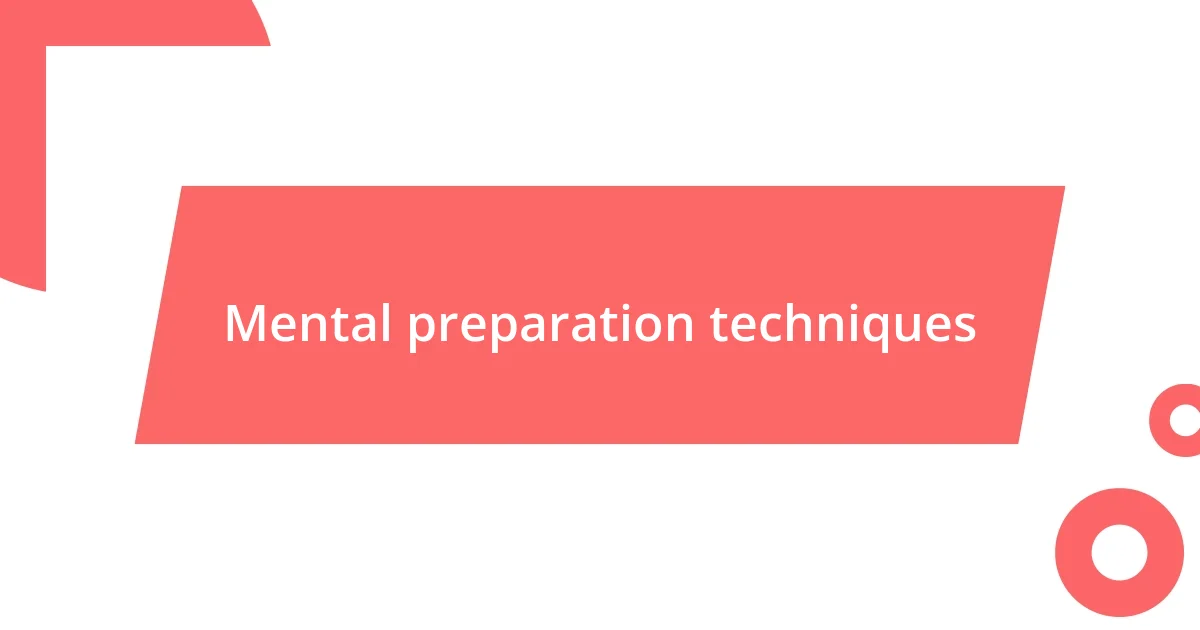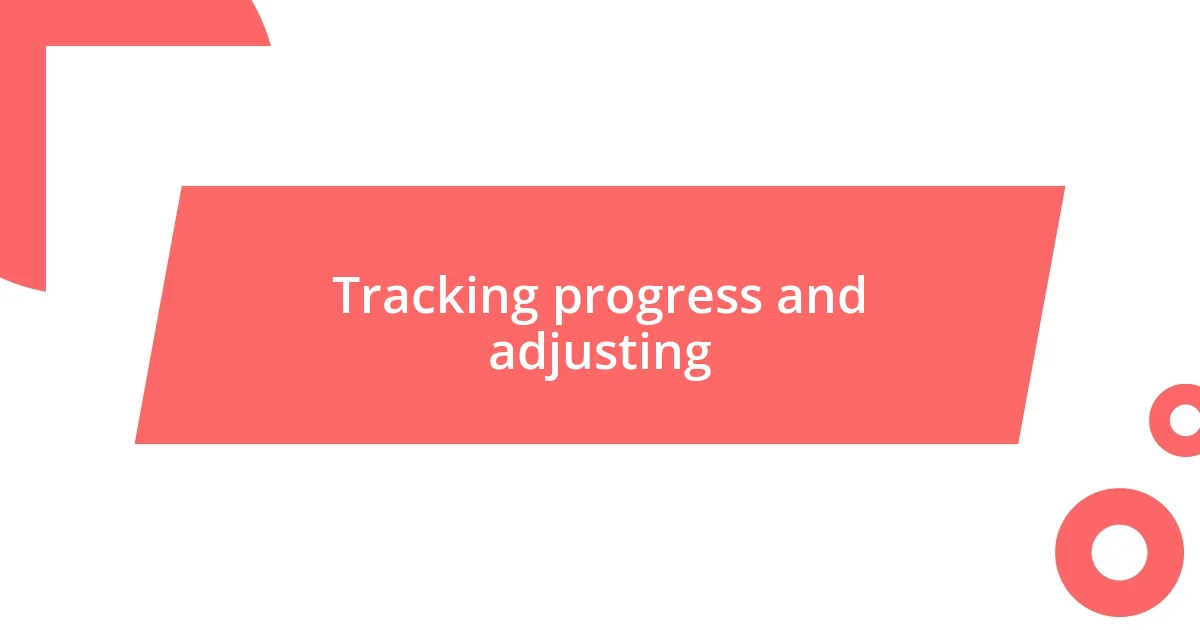Key takeaways:
- Setting clear Olympic goals involves breaking down aspirations into actionable steps, emphasizing personal growth over just winning.
- A structured training plan that incorporates elements like progress tracking, recovery, nutrition, and mental techniques is essential for achieving Olympic dreams.
- Visualization and mental preparation techniques, including affirmations and mindfulness, significantly enhance focus and confidence in athletes.

Setting clear Olympic goals
When I think about setting clear Olympic goals, I realize it’s not just about aiming for a medal; it’s about defining my purpose. I remember a time early in my training when I blurred the lines between winning and improving. Focusing on personal milestones instead of just results felt liberating, and it fueled my passion. How do you want your journey to resonate with you beyond the glory?
It’s essential to break down those big dreams into smaller, actionable steps. For me, this meant setting weekly targets, whether it be enhancing my endurance or perfecting my technique. Tracking these achievements gave me a sense of progress that kept motivation high. Doesn’t it feel great to celebrate those little wins along the way?
I find that visualizing my goals also plays a crucial role in my mental preparation. I often create a vision board, a collage of images that embody my aspirations and remind me of my dedication. Every time I look at it, I’m reminded of my commitment and the emotions tied to each goal. How do you visualize your dreams? Do you have something that inspires you daily?

Assessing current performance levels
Assessing my current performance levels is an eye-opener. It allows me to take an honest look at where I stand in my training and how far I’ve come. Last season, I recorded my times and techniques meticulously, and I still find it astonishing to see tangible evidence of my improvement. Have you ever noticed how sometimes it’s easy to overlook our progress when we’re so focused on the end goal?
I remember a pivotal moment during a recent competition when I compared my current stats to my previous ones. The numbers didn’t just reflect performance; they told a story of dedication and resilience. I was pleased to discover that I had improved my personal best by a significant margin, which sparked a newfound confidence in me. Can you relate to the thrill of breaking through your own barriers?
To really grasp my performance levels, I often utilize a comparison table. This approach helps me visualize my strengths and weaknesses clearly. Keeping an organized record allows me to assess which areas need more focus as I prepare for the next Olympics.
| Performance Metric | This Season | Last Season |
|---|---|---|
| 100m Sprint Time | 11.5 seconds | 12.0 seconds |
| Endurance (5k) | 18 minutes | 20 minutes |

Developing a training plan
Developing a training plan is where the magic of transformation begins. I vividly recall a time when I approached training a bit haphazardly, jumping from one workout to another without a cohesive strategy. It was only when I sat down to meticulously map out a structured plan that I truly began to see progress. I broke everything into components: strength, endurance, technique, and mental conditioning. Suddenly, everything felt more focused, almost like putting together the pieces of a puzzle.
Here’s a quick breakdown of what I consider essential elements in my training plan:
- Weekly Schedule: Allocate specific days for strength training, endurance, and technique.
- Progress Tracking: Maintain a daily log to reflect on achievements and setbacks.
- Recovery Time: Plan rest and recovery sessions to prevent burnout and injuries.
- Nutrition Goals: Set specific dietary objectives to complement training demands.
- Mental Techniques: Incorporate meditation or visualization exercises regularly.
By committing to this structured approach, I notice that my training sessions become more purposeful, and that drives me to perform better. Each week becomes an opportunity to build on previous successes, and I can literally feel myself getting closer to my Olympic dreams. Have you thought about how a well-laid plan can illuminate the path to your goals?

Nutrition and recovery strategies
Nutrition is the foundation that supports my Olympic aspirations. I’ve learned there’s no one-size-fits-all approach; what fuels me might not work for someone else. During a particularly grueling training phase last year, I experimented with different meals, and I found that increasing my protein intake helped me recover faster. Have you ever noticed how certain foods can dramatically influence your energy levels? It’s fascinating to feel that connection between what I eat and how I perform.
Recovery strategies have become as crucial as the training sessions themselves. Typically, I incorporate practices like foam rolling and stretching, but I also discovered the power of sleep. After a period where I wasn’t prioritizing rest, I noticed a significant dip in my performance. I made a conscious decision to improve my sleep hygiene, and the results were impressive. I felt sharper and more energized. Sleep really is an underrated aspect of an athlete’s routine, don’t you think?
I’ve also embraced hydration as a critical element of both nutrition and recovery. Initially, I underestimated its importance, often reaching for sports drinks rich in sugar. However, I soon realized that water is often the best choice. Staying properly hydrated during long training sessions not only keeps my energy up but also reduces muscle soreness the next day. It’s amazing to think that such a simple strategy can yield profound effects, right? Each of these elements—nutrition, recovery, and hydration—works synergistically to keep me on track for my goals.

Mental preparation techniques
Mental preparation is a game changer for me. One technique that resonates deeply is visualization. I remember the first time I sat quietly, closed my eyes, and imagined myself standing on the Olympic podium, feeling the weight of the medal around my neck. That moment felt so real that the emotions surged through me—excitement, pride, and determination. Have you ever allowed yourself to dive into such vivid daydreams about your own goals? It can ignite a fire within and keep you focused on your path.
Affirmations are another tool I swear by. Each morning, I recite powerful statements that resonate with my ambitions, like, “I am strong,” or, “I am capable of achieving my dreams.” It sounds simple, but these affirmations shift my mindset in a way that’s profound. I recall a tough training day when doubt crept in; repeating those words helped snap me back to confidence. It’s almost magical how positive self-talk can transform an athlete’s mindset during both training and competition.
Lastly, I find mindfulness practices to be incredibly grounding. Taking just ten minutes to breathe deeply and center myself helps clear my mind before rigorous training sessions. One particularly hectic day, I felt overwhelmed with expectations, but a few minutes of mindfulness allowed me to reclaim my mental space. Have you experienced the power of being present, even just for a moment? That clarity can dramatically change how you approach your next challenge. By nurturing my mental preparation, I’m not just training my body— I’m fortifying my entire being for the journey ahead.

Tracking progress and adjusting
Tracking progress in my Olympic journey is both exciting and essential. I regularly assess my training sessions and performance metrics to understand where I am and where I need to go. For instance, after evaluating my sprint times last month, I realized that integrating interval training could boost my speed significantly. Isn’t it empowering to see how small adjustments can lead to meaningful improvements?
Adjusting my strategies is just as important as tracking them. There was a moment last year when my lifting numbers plateaued. Instead of pushing harder, I decided to consult with my coach, who suggested a change in my lifting technique. That simple tweak reignited my progress and taught me that asking for guidance can be a game-changer. Do you ever find yourself stuck and in need of a fresh perspective? It can make all the difference.
Using technology has also revolutionized how I track my progress. I’ve started using apps that log my workouts, nutrition, and recovery metrics, offering immediate insights on what’s working and what isn’t. The first time I reviewed my data, I was surprised to see patterns in my energy levels tied to specific training cycles. This awareness allows me to adjust my approach proactively, which keeps me on track towards my Olympic dreams. Have you ever experienced that “aha” moment when data sheds light on your habits? It motivates me to keep pushing forward.

Visualizing success at the Olympics
Visualizing success at the Olympics has become an integral part of my training routine. I often find myself in a meditative state, envisioning every detail of race day, from the sound of the starting gun to the cheers of the crowd as I cross the finish line. This visualization process provides a mental blueprint, allowing me to rehearse both my performance and my emotions as if they were real. Have you ever taken a moment to imagine achieving something monumental in your life?
The vivid images I create in my mind don’t just make me feel excited—they also prepare me to tackle realistic challenges. I remember a particularly intense training block where fatigue loomed large. During a tough afternoon session, I closed my eyes and visualized the exhilaration of standing atop the podium. That simple mental exercise reignited my commitment and energy, turning fatigue into a deeper resolve. Does tapping into those bright moments of success energize you when obstacles arise?
What I’ve learned is that visualization is not solely about the glory; it’s also about embracing the pressure that comes with it. I recall standing in front of the mirror one night, reflecting on my journey while imagining the weight of that medal in my hands. The visualization revealed not just the triumph, but the immense dedication required to get there. Isn’t it fascinating how seeing ourselves succeed can prepare us for the trials and tribulations along the way? By cultivating such mental images, I am not just dreaming; I am laying the groundwork for actual achievement, one thought at a time.















